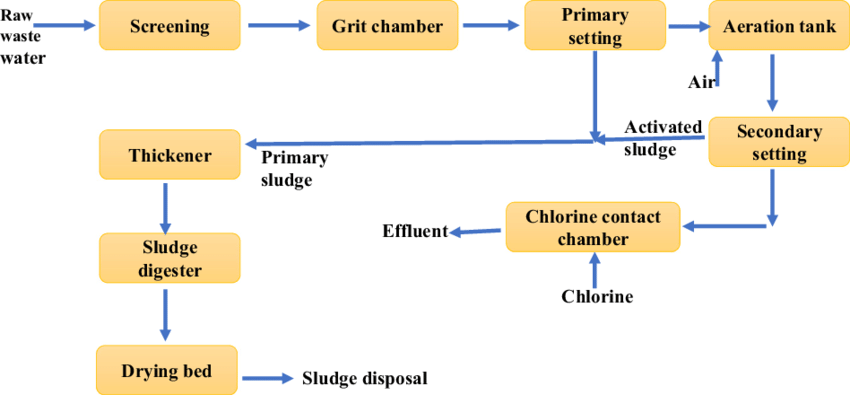Reclaim Waste - An Overview
Table of ContentsThe Greatest Guide To Reclaim WasteThe Best Strategy To Use For Reclaim WasteReclaim Waste Things To Know Before You BuyLittle Known Facts About Reclaim Waste.Some Known Questions About Reclaim Waste.
Check out the types, incidents, and kinds of liquid waste. Domestic sewer waste refers to the waste and products from a household sewage-disposal tank. This type of waste is created by humans in residences, colleges, and other structures. This only consists of sewage-disposal tanks that have a drain area. The appropriate monitoring and disposal of residential sewage waste require liquid waste to be transferred to a sewer treatment plant where the appropriate methods and tools are put on purify and throw away waste.
Commercial waste usually consists of potential threats, such as flammable materials or a mix of liquid and strong waste items, and needs an advanced and in-depth disposal procedure. The disposal of industrial waste usually includes the filtration of waste before transport to ensure risk-free and correct disposal. Hazardous waste is created from by-products and drainage of industrial procedures and manufacturing.
This sort of waste can not use the exact same sewage monitoring transport or procedures as septic or industrial fluids. The hazardous waste monitoring procedure requires the inspection and testing of liquid waste before it goes through the disposal process (liquid waste disposal). Overflow waste is the liquid waste that originates from drainage and excess stormwater in very populated areas or cities
Drainage waste can create contamination and flooding if not handled effectively. Making certain correct waste management can protect against catastrophes and decrease ecological damage.
The 15-Second Trick For Reclaim Waste
Contact PROS Solutions today to discover our waste management and disposal solutions and the appropriate ways to look after the fluid waste you create.
(https://filesharingtalk.com/members/604691-reclaimwaste1)This supposed 'wastewater' is not just a vital source yet, after therapy, will be launched to our land, waterways or the sea. Utilized water from commodes, showers, baths, cooking area sinks, laundries and commercial procedures is understood as wastewater.

water used to cool visit site down equipment or clean plant and devices). Stormwater, a kind of wastewater, is runoff that streams from farming and urban locations such as roofing systems, parks, yards, roadways, paths and rain gutters right into stormwater drains, after rainfall. Stormwater moves unattended directly to neighborhood creeks or rivers, ultimately reaching the sea.
The Reclaim Waste Ideas
In Queensland, the majority of wastewater is treated at sewage treatment plants. Wastewater is delivered from domestic or industrial websites through a system of sewage systems and pump terminals, known as sewage reticulation, to a sewage treatment plant.
The Department of Natural Resources advises city governments regarding managing, operating and maintaining sewerage systems and therapy plants. In unsewered areas, regional federal governments might require owners to mount individual or household sewer therapy systems to treat domestic wastewater from bathrooms, kitchens, restrooms and washings. The Division of Natural Resources authorises using household systems when they are proven to be efficient.
Many stormwater receives no therapy. In some new class, therapy of some stormwater to remove clutter, sand and gravel has begun making use of gross contaminant catches. Wastewater treatment happens in four stages: Removes strong matter. Bigger solids, such as plastics and various other things mistakenly released to drains, are gotten rid of when wastewater is gone through screens.
Wastewater after that flows into large storage tanks where solids resolve and are removed as sludge. Oil and scum are skimmed from the surface. Makes use of tiny living organisms understands as micro-organisms to damage down and remove staying liquified wastes and fine particles. Micro-organisms and wastes are integrated in the sludge. Gets rid of nitrogen and phosphorus nutrients that can create algal blooms in our waterways and intimidate marine life.
What Does Reclaim Waste Mean?
Nutrient elimination is not readily available at all sewer treatment plants because it calls for pricey specialised tools. Clear liquid effluent produced after treatment might still include disease-causing micro-organisms - liquid waste removal melbourne.

A lot of wastewater flows right into the sewage system. Under the Act, regional federal governments provide approvals and permits for environmentally pertinent activities (Periods) including wastewater launches that may have a neighborhood influence.
How Reclaim Waste can Save You Time, Stress, and Money.
Otherwise, examples are considered laboratory analysis. Often numerous tests are needed to establish the degrees of each of the various pollutants such as oils, hefty steels and pesticides in water. Surveillance provides valid information concerning water top quality and can confirm that licence problems are being fulfilled. The details acquired via monitoring supplies the basis for making water top quality decisions.